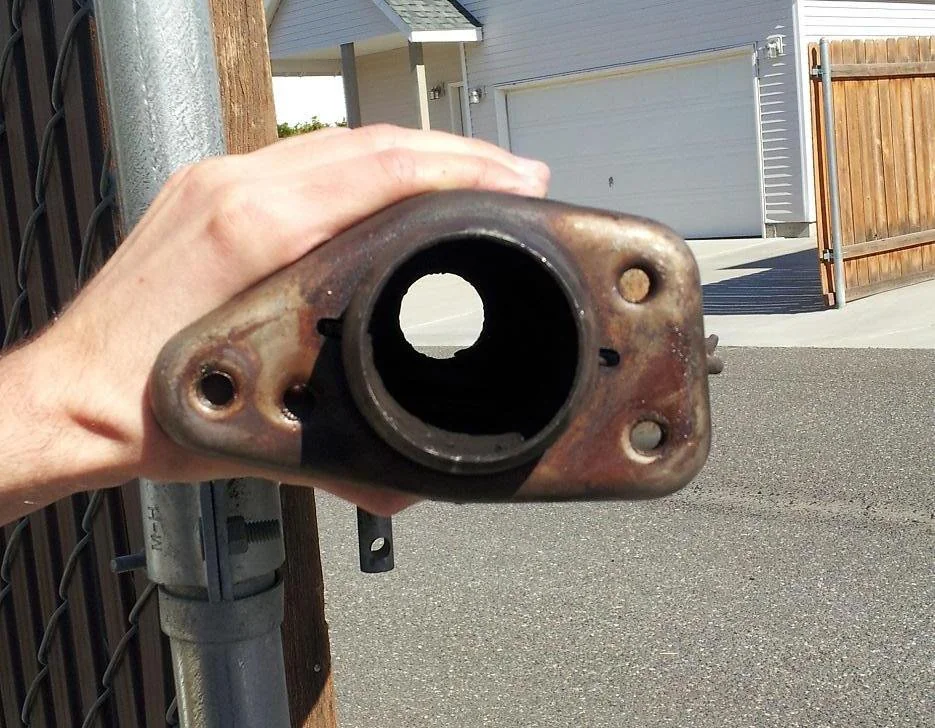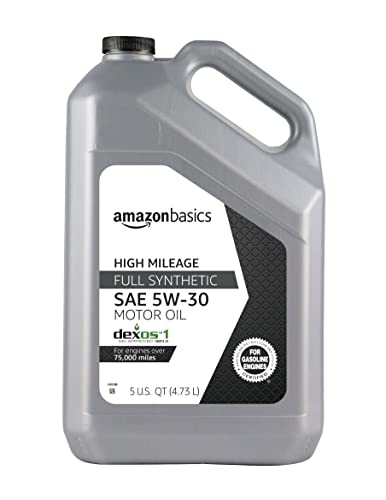Do you know that a catalytic converter is responsible for converting toxic gases from your exhaust system into less harmful ones? This makes it of great importance to your car. Unfortunately, when the catalytic converter is not functioning as it should, the effects are devastating to your vehicle.
Ignition parts like spark plugs can cause misfire but can a clogged catalytic converter cause a misfire? As you read in this article, you will know if a catalytic converter can cause a misfire, the 5 signs for clogged catalytic converter, how to unclog a catalytic converter, and how to maintain your catalytic converter for a long time.
Table of Contents
Can a Clogged Catalytic Converter Cause a Misfire?
Yes, A clogged catalytic converter can cause a misfire because it can restrict exhaust flow, disrupting the air/fuel ratio in the engine and causing it to run poorly. A misfire can also be caused by other issues such as a faulty spark plug or ignition system problem.

When you have a clogged catalytic converter, your car loses power, preventing the flow of gases through its exhaust system, therefore restricting smoke from coming out quickly. Unfortunately, this eventually results in a misfire when going uphill or trying to accelerate on the highway.
Although most misfires are often symptoms of a bad cylinder or bad spark plug yet, your catalytic converter can be responsible. So whenever a misfire happens, and your cylinder and spark plugs are in a good condition, your next stop during diagnosis should be your catalytic converter.
How Does A Catalytic Converter Get Clogged?
Although, many substances like dirt, dust, and debris could be responsible for clogging any car component. The clogging of the catalytic converter starts with oil. The oil acts as the binder that holds these substances together, making it impossible to push out the buildup even when the engine is fired.
This is why you should be careful when dealing with oily substances during routine car maintenance. Oily and antifreeze substances can get your catalytic converters clogged as they attract other substances around them.

The result is a solid layer of soot coats and carbon that clogs the passage of the catalytic converter catalyst. This clogged passage hinders the converter from transforming toxic substances to less harmful emissions, and backpressure increases due to restricted exhaust flow.
If this continues, it sends heat and exhaust gases back into the engine, causing costlier damages. Next, let us look at some signs that indicate you have a clogged catalytic converter. Once you notice these signs, you should take action immediately.
5 Signs for Clogged Catalytic Converter
Many signs indicate your catalytic converter is clogged. However, we will be discussing the top five among them. They include:
- Engine Misfire
- Low Engine Performance
- Excessive emissions
- Low Engine Power
- Visible Check Engine Light
Engine Misfire
A misfire has to do with incomplete combustion inside your cylinder. This is a sure way of knowing you have a less active or clogged catalytic converter. Such converters overheat and have a damaging impact on your car engine.
Most mechanics will resort to your car having a clogged catalytic converter after checking Other Potential Reasons for an engine misfire. Ensure you have a reliable mechanic who can detect this fault without wasting your time.
Low Engine Performance
Significant backpressure is created in your exhaust system if you have a clogged catalytic converter, adversely affecting your engine performance. You will notice your car vibrating excessively, and it can stall when there is a sudden pressure outburst.
Excessive emissions
Since the catalytic converter is part of the exhaust system, you can be sure to suffer from excess emissions when it is faulty. So whenever you notice more carbon emissions from your car, then it means your catalytic converter is clogged.
Low Engine Power
Do you notice your car losing power as you accelerate uphill? Then, it is most likely due to a clogged catalytic converter. However, car professionals often attribute the loss of engine power to other internal components of the car engine rather than a clogged catalytic converter.
One way to ascertain the state of your catalytic converter is by placing your hand around the exhaust tip or tailpipe while someone holds your vehicle around 1800 to 2000 RPM (Revolutions Per Minute). A hot exhaust flow indicates that your catalytic converter is clogged.
Visible Check Engine Light
Your check engine light indicates a fault with anything related to your car engine. Sometimes, it could come on due to a faulty hood latch and many more. Also, a clogged catalytic converter can activate your check engine light because of its connection with the air-fuel sensors located in your car’s exhaust system.
It would be best if you pinpointed why your check engine light is coming on before concluding that it’s the catalytic converter. A professional can help you troubleshoot why the light came on before you make this conclusion.
Other Potential Reasons for An Engine Misfire
At this point, let us look at other potential reasons for an engine misfire since a clogged catalytic converter is just one of them. Other grounds for an engine misfire includes:
- Carbon Tracking
- Other Ignition Problems
- Faulty Spark plugs
Carbon Tracking
For ignition to occur in your car, the process begins with the spark plug efficiently delivering the current needed to burn the air-fuel mixture in the combustion chamber. Sometimes, the spark plug tip responsible for ignition gets clogged with oil, dirt, or moisture due to usage.
This leads to an engine misfire known as carbon tracking or flashover. Modern spark plugs prevent this issue because they use a technology that eliminates the flashover effects, whereas old cars may still have this issue.
Other Ignition Problems
Many other factors are responsible for engine misfires, asides from the spark plug. For example, crankshaft position sensor and wiring, coil packs, and many more can result in your engine misfiring anytime you ignite the machine or try to accelerate uphill.
Faulty Spark plugs
The most common reason for engine misfire is a faulty spark plug. Unfortunately, anytime you tell your mechanic that your engine misfires without a diagnosis, they will likely guess that you have a defective spark plug. The spark plug is in charge of delivering electric current from ignition to your car’s combustion chamber, therefore allowing the air-fuel mixture to ignite and generate the pressure needed to move the vehicle.
When your spark plug is faulty (whether mishandled, installed wrongly, or worn), a misfire can happen, and it can leak air which increases the air content of the air-fuel mixture, leading to a misfire. Therefore, it would be best to always inspect your spark plug from time to time, especially during routine maintenance, so that you do not get disappointed someday while traveling.
How to Know If Your Clogged Catalytic Converter Is Causing A Misfire?
Firstly, unless you are a tenacious DIY car owner, you should not diagnose your car yourself as you may miss the point. For every diagnosis, you should consult an auto professional. However, if you are one of those that like to get a first-hand feel of the problem before calling for help, then you can go ahead.
Many car components can cause a misfire, so we recommend first looking at those components that have a direct relationship with your ignition before you attempt checking to see if you have a clogged catalytic converter.
The steps highlighted below will help you know if your catalytic converter is the leading cause of your engine misfire.
- Look for other signs
- Feel the exhaust
- Consult a professional
Look for other signs
After checking every ignition-related component and confirming its condition, you should read our section on five signs of a clogged catalytic converter. In addition, when your engine misfire is accompanied by an increased emission, rotten egg smell, low engine performance, low engine power, and your check engine light is on, then know certainly that your catalytic converter is clogged.
Feel the exhaust
To further confirm your suspicion, you can do a home test to see for yourself. You will need a friend to help you hold up your vehicle RPM between 1800 to 2000 while you use your hand to feel the smoke coming out from your tailpipe.
This test is done while the car is at rest so that you will not feel the heat generated after a long trip. The catalytic converter is clogged if the smoke around the tailpipe is hot while the car is resting.

Also, if it is not hot, then the catalytic converter is either not clogged or not clogged enough. Know that this test is not conclusive on determining if you have a faulty catalytic converter until you perform the third step.
Consult a professional
As we stated earlier, any diagnosis of any component in your car, even a catalytic converter, is not complete until a professional looks at it. Therefore, except you are a car professional yourself, you should not assume what is wrong with your car after some DIY tests.
The tendency to think you are now a professional after watching some YouTube videos may come; you should know that your car and its usage are different from those you saw on the screen. Only a mechanical professional can confirm the actual state of your catalytic converter to you.
How Do You Unclog a Catalytic Converter?
It is not in all cases that you can unclog a clogged catalytic converter, especially if it does not allow the engine to run; you might need specialist help or replace it altogether. Also, if the converter is already broken, there’s no point in repairing it. Lastly, fuel leakage in the car engine can reverse the effect of unclogging a clogged catalytic converter in no time.
There are two significant ways to unclog the catalytic converter, and they are:
- Making the catalytic converter unclog itself
- Unclogging the catalytic converter by removing it
Making the catalytic converter unclog itself
A straightforward approach to unclogging the catalytic converter is to let it unclog itself rather than spend more time trying to detach it from the car engine. Follow the step below to achieve it.
- Look for a catalytic converter cleaner that is compatible with your car.
- Get your car fuel down to 15 liters or fill it up to 15 liters
- Pour this cleaner in the tank and follow the cleaner instruction
- Drive for about 30 minutes at 2500 to 3000 RPM until your tank is near empty (but make sure the car is not overheating)
- Clear OBD codes if present
- Wait for the OBD code to recalibrate
You should know that this method will only work if the catalytic converter is not too clogged up. However, if it does not, try method two explained below.
Unclogging the catalytic converter by removing it
This method is not for a novice DIY car owner because it is not simple to carry out. It starts with getting all the necessary tools and items needed. You will need safety gloves, degreaser, clean towel, wrench, jack, high-pressure washer, and a container. Then, do the following.
- Wear your safety gloves and google, then park the car in a well-lit environment on a flat surface.
- Cool off the exhaust system so that it won’t hurt you while trying to remove it
- Jack up the vehicle and suspend it using the jack stands
- Remove the oxygen sensors in the catalytic converter because they are sensitive items that cost a lot if damaged.
- Remove the catalytic converter
- Wash it using pressure water at low pressure
- Dip it in hot water and degreaser
- Rinse the converter with the high-pressure washer, also at low pressure
- Reinstall it after it gets dry and drained
- Then, reinstall the sensors you removed at first.
When removing the catalytic converter, you should carefully release the bolts using the wrench. This is so that you will not compress the converter and make it useless. You may need to add oil to make it easier to undo the bolts. If its bolts are welded, a professional mechanic may need to be consulted.
How to Maintain a Catalytic Converter?
To avoid the high cost of replacing your catalytic converter, you should maintain it all the time. If you treat your converters well, you can be assured of having them with you throughout the vehicle’s useful life.
Here are some tips on how to maintain a catalytic converter:
- First, only use recommended lubricants to avoid introducing substances that could clog up your cat converter. OEM-approved oils are the best if you want your converter to last long; other off-shelf oils may contain components that release byproducts to damage your converter after combustion.
- Avoid low-grade fuel; leaded fuel can reduce converter efficiency and even cause lead poisoning. Always use the grade recommended by your manufacturer.
- Always check your injector nozzles for clogs and other substances which could lead to misfiring. When your injector fails, it could release unburnt fuel to the converter and cause severe damage to it when it burns there.
- Poor driving on bad roads can also affect the catalytic converter. Although you cannot always avoid bad roads, you can drive carefully to avoid hitting curbs and bumps that could destroy your converter back there.
- You may need to wash your converter when the acceleration feels off after reaching 50,000km. Again, this washing is best done by a professional.
- Also, avoid driving in puddles; converters operate at very high temperatures, so a rapid reaction can cause its substrate to break anytime it comes into water.
- Inspect the converter regularly during routine maintenance, and listen for unusual noises or damage to its external shell. If you spot any crack, damage, or particles in the exhaust, you may need to replace the converter.
- Sometimes, you do all these and still lose your catalytic converter; in that case, a replacement is inevitable. In addition, you can sell your bad catalytic converter to a converter recycling company for a price.
Frequently Asked Questions
What are the symptoms of a clogged catalytic converter?
Symptoms of a blocked catalytic converter include diminished engine performance, poor acceleration, reduced fuel economy, a sulfur-like odor, and the activation of the “Check Engine” light.
How do I unclog my catalytic converter?
To unclog a catalytic converter, use a catalytic converter cleaner. Add the chosen cleaner to the fuel tank and drive your vehicle for a specified distance, allowing the cleaner to dissolve the deposits. Consult a mechanic if the blockage remains.
What happens if your catalytic converter is completely clogged?
An entirely clogged catalytic converter can cause significant engine damage, stalling, overheating, reduced performance, and potential environmental harm due to increased emissions. It’s crucial to address this issue quickly.
Wrapping Up
Yes, a catalytic converter can cause an engine misfire, but you can solve this problem if you know how to unclog a catalytic converter (without removing it). So watch out for the signs your cat converter could be clogged and take immediate action on it (by consulting a professional if you must remove it).
Here’s a quick summary of other things we looked at:
- How to Maintain a Catalytic Converter?
- How to Know If Your Clogged Catalytic Converter Is Causing A Misfire?
- How does a catalytic converter get clogged?
We hope you had a good read.






